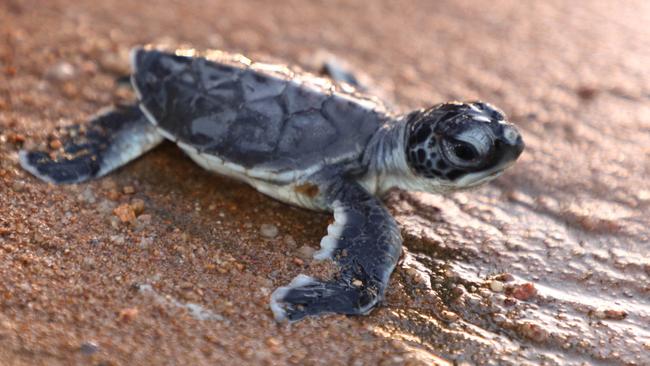Climate Resilient Coastlines project aims to help Magnetic Island’s turtles
Residents could play an important role in a research project to mitigate the impacts of climate change on turtle reproduction and coastal erosion. Find out more.

Townsville
Don't miss out on the headlines from Townsville. Followed categories will be added to My News.
Faced with the challenges of habitat destruction and climate change, the turtles nesting on Magnetic Island will be the focus of an innovative new research project, which requires help from the community.
Led by Envite Environment in collaboration with Magnetic Island Network for Turtles (MINT), the Turtle Friendly Climate Resilient Coastlines project will study the correlation between vegetation and the success rate of sea turtle hatchlings, particularly the Green and Flatback turtles that nest on the island each year.
Community members will be invited to get involved by submitting photos taken at yet to be installed Coast Snap photo monitoring stations.
These photos will document the changing shoreline over time and produce data that can be used for shoreline mapping and help scientists to forecast how coastlines may change in the coming decades.
Envite Regional Manager, Natasha Rodwell said that the project aims to mitigate the impacts of climate change on turtle reproduction and coastal erosion.

“Queensland Parks and Wildlife Service (QPWS), in collaboration with MINT, have been collecting turtle nesting data for over 15 years,” Ms Rodwell said.
“Higher sand temperatures increase hatchling mortality rates which results in more female hatchlings being produced.
“Our project will use a science-based approach to develop a coastal revegetation management tool, to not only improve turtle nesting habitat but promote the natural resilience of the coastline and reduce erosion of our coastal dunes.”
The second stage of the project will involve on-ground revegetation works in partnership with Townsville City Council in areas such as Nelly Bay, West Point and Geoffrey Bay, helping reduce sediment loads impacting surrounding seagrass, mangrove and fringing reef communities.


MINT Coordinator Jo Petersen welcomed the renewed focus on habitat restoration.
“By increasing our understanding of sea turtle nesting habitat and interventions, we as a community can improve survivorship for sea turtle hatchlings,” Ms Petersen said.
The project is funded by the Australian Government’s Reef Trust and Great Barrier Reef Foundation, with on-ground support also coming from Magnetic Island Community Development Association, Magnetic Island Nature Care Association, Arcadia Coast Care, Coastal Dry Tropics Landcare Inc, and the Port of Townsville.
More Coverage
Originally published as Climate Resilient Coastlines project aims to help Magnetic Island’s turtles





